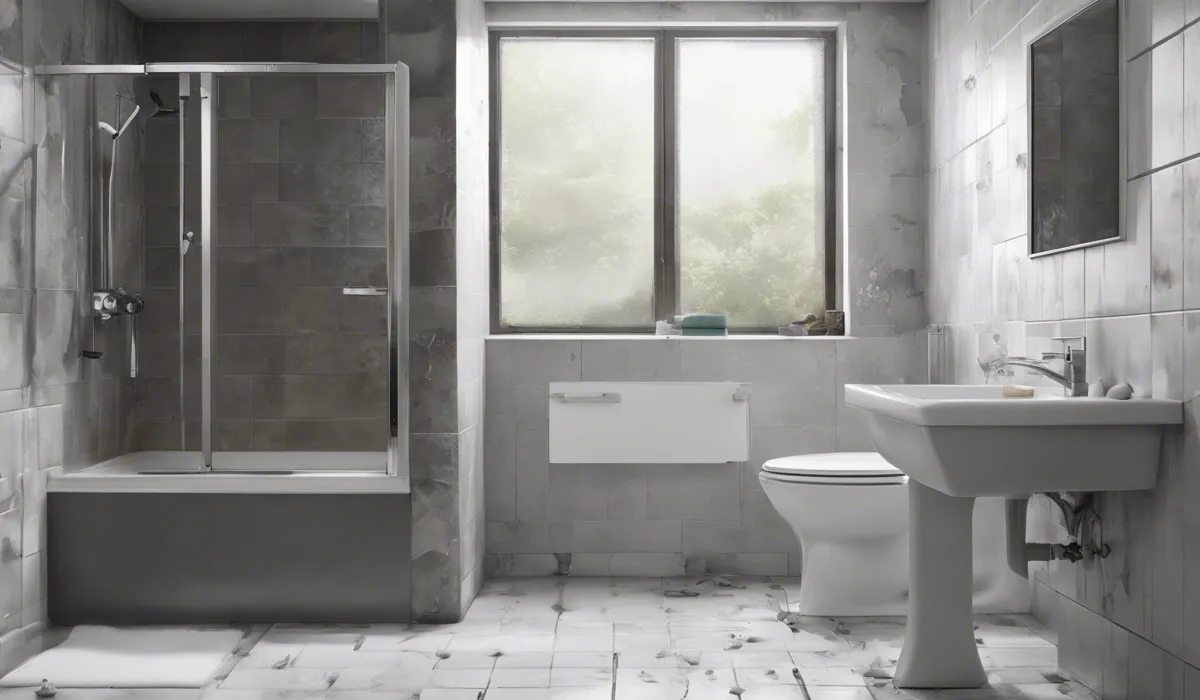Bathroom mold can be dangerous as it may cause health issues, especially in individuals with allergies, asthma, or weakened immune systems. Prolonged exposure to mold spores may lead to respiratory problems. It’s important to remove mold promptly and prevent its return by ensuring proper ventilation.
Understanding Mold in the Bathroom

Definition and Characteristics of Mold
Mold is a type of fungus that can grow both indoors and outdoors. It thrives in damp, warm, and humid environments, making your bathroom an ideal space for it to flourish.
Mold reproduces through tiny spores that travel through the air. When these spores land on wet surfaces, they start to grow.
Mold can appear in a variety of colors, including black, green, white, or orange, and it often has a musty smell.
Common Types of Mold Found in Bathrooms
In the bathroom, you might encounter several types of mold. Black mold, or Stachybotrys chartarum, is known for its dark color and potential to cause health problems.
Another common type is Aspergillus, which can appear in different colors. Cladosporium, which is usually green or brown, can also show up on damp surfaces such as tiles and grout.
Reasons for Mold Growth in Bathroom Environments
Mold loves moisture, and bathrooms often provide plenty of it. Leaky faucets, standing water, and steam from showers and baths create the perfect breeding ground for mold.
Poor ventilation adds to the problem, as it allows moisture to linger on surfaces. Materials like wood, wallpaper, and fabric can absorb water, further encouraging mold growth.
Differences Between Mildew and Mold
Though often used interchangeably, mildew and mold are not the same. Mildew is a surface fungus that appears as a patch of gray or white that lies flat against a moist area.
Mold, on the other hand, is usually black or green and may appear either fuzzy or slimy. Mold can penetrate deeper into surfaces, causing more damage than mildew.
Health Risks Associated with Bathroom Mold

Mold Exposure and Respiratory Health
When you breathe in mold spores, they can irritate your airways, causing coughing, wheezing, and trouble breathing.
People with asthma may have more severe reactions, including asthma attacks. Long-term exposure to mold can lead to more serious respiratory issues, even in people who were not previously sensitive to it.
Allergic Reactions and Mold Sensitivity
Many individuals are allergic to mold. Symptoms of mold allergies can include sneezing, runny or stuffy nose, itchy eyes, and skin rashes.
For those who are sensitive to mold, exposure can trigger an immune system response that leads to these uncomfortable symptoms.
Mold-Related Infections and Health Conditions
In some cases, mold can cause infections, especially in people with weakened immune systems. These infections can affect the skin, lungs, or other organs.
Prolonged exposure to mold has also been linked to the development of asthma in children and can exacerbate chronic lung conditions in adults.
Vulnerable Groups
Certain groups of people are more at risk of mold-related health problems. The elderly may have weakened immune systems, making them more susceptible to infections.
Infants and young children are still developing their respiratory systems and are more vulnerable to mold’s harmful effects.
Those with compromised immune systems, such as people undergoing chemotherapy or living with HIV/AIDS, are also at a higher risk for mold-related health issues.
Prevention and Remediation Strategies

Best Practices for Bathroom Ventilation and Humidity Control
Keeping your bathroom well-ventilated is key to preventing mold. Use an exhaust fan during and after showers to remove steam and moisture.
If you don’t have a fan, open a window or use a dehumidifier to help dry out the air. Keeping humidity levels in your bathroom below 50% can significantly reduce the risk of mold growth.
Regular Cleaning Tips to Prevent Mold Buildup
Cleaning your bathroom regularly is essential to prevent mold. Wipe down shower walls and curtains after use to remove moisture.
Clean and dry any wet spots on the floor or counters. Pay special attention to corners and crevices where mold likes to hide.
Use mold-resistant shower curtains and paint to further protect your bathroom.
Natural and Chemical Mold Removal Methods
If you find mold in your bathroom, you can tackle it with natural solutions like vinegar or baking soda. Apply these to the affected area, scrub gently, and rinse.
For tougher mold, you might need a chemical mold remover. Follow the instructions carefully and make sure the room is well-ventilated.
When to Call a Professional for Mold Remediation?
If the mold in your bathroom covers a large area, or if you have health concerns, it’s best to call in a professional.
Mold remediation experts can safely and effectively remove the mold, ensuring that it won’t return.
They can also help identify the underlying causes of mold growth to prevent future problems.
FAQs About Bathroom Mold Danger
Is bathroom mold dangerous to everyone?
Bathroom mold can be particularly dangerous for individuals with allergies, asthma, or compromised immune systems, but it has the potential to cause health issues for anyone with prolonged exposure.
What types of health issues can bathroom mold cause?
Bathroom mold can lead to respiratory problems, allergic reactions, and in some cases, may exacerbate asthma symptoms.
How quickly should I remove mold from my bathroom?
It’s important to remove mold as soon as it’s spotted to prevent health issues and stop it from spreading further.
Can mold in the bathroom affect my respiratory health?
Yes, prolonged exposure to mold spores in the bathroom can lead to respiratory problems.
How can I prevent bathroom mold from returning?
Prevent bathroom mold from returning by ensuring proper ventilation, regularly cleaning moist areas, and fixing leaks promptly.
Final Thoughts
Bathroom mold poses a health risk, particularly for those with allergies, asthma, or compromised immune systems.
Exposure to mold spores can exacerbate respiratory issues. Timely mold removal and prevention through adequate ventilation are crucial for maintaining a healthy living environment.
